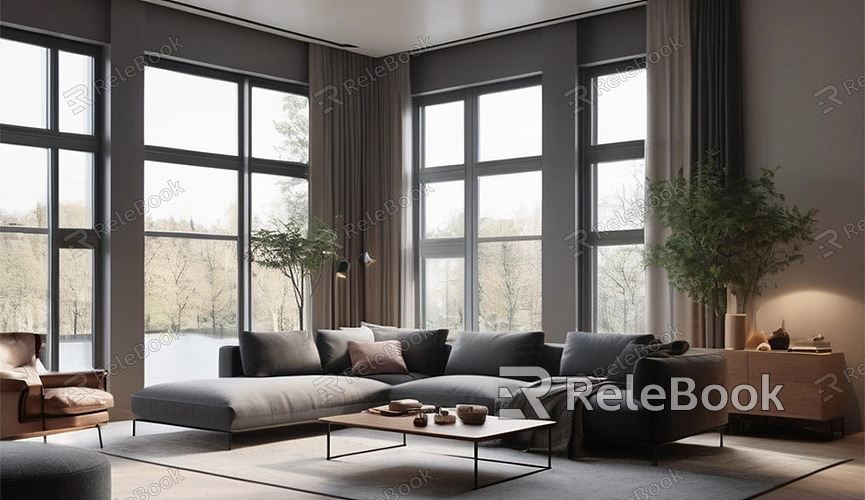How to Paint a Textured Ceiling
Painting a textured ceiling may seem like a challenging task, but with the right methods and techniques, it can be easily accomplished. Whether you're looking to renovate an old ceiling or add color to a new one, painting can rejuvenate the entire space. This article will guide you through the process of painting a textured ceiling, ensuring each step proceeds smoothly.
If you need better colors for your 3D ceiling model, you can download texture packs from Relebook and directly import them into your 3D model, or you can download exquisite 3D models from Relebook and import them for use.
Preparation
1. Select Suitable Paint and Tools:
Start by choosing paint suitable for a textured ceiling. High-quality latex paint is recommended for its easy cleanup and durability. For tools, you'll need:
Long-handled roller: Choose a roller suitable for ceilings to facilitate paint application.
Paintbrush: Used for detailing and edges that the roller can't reach.
Broom or vacuum cleaner: Used to clean dust and cobwebs from the ceiling surface.
Drop cloth or plastic sheeting: Protects furniture and flooring from paint splatter.
Safety goggles and mask: Protects eyes and respiratory system from dust and paint fumes.

2. Clean the Ceiling:
Before painting, ensure the ceiling surface is clean. Use a broom or vacuum cleaner to remove dust and cobwebs. If the ceiling has grease or smoke stains, wipe it with warm water and a small amount of cleaner.
3. Protect Furniture and Floors:
Cover the floor and furniture with drop cloths or plastic sheeting to prevent paint splatter. Ensure all lights and decorations are either removed or adequately covered to avoid contamination with paint.
Starting to Paint
1. Brush Edges and Corners:
Use a paintbrush to paint the edges and corners of the ceiling. This step is essential as rollers may not effectively cover these areas. Ensure the paint coverage is even and complete.
2. Roll Paint:
Pour paint into the roller tray and saturate the roller. Use a long-handled roller to apply paint to the ceiling, maintaining a consistent direction (typically first lengthwise, then crosswise) to ensure even distribution. When painting, maintain a steady rhythm and avoid excessive pressure to prevent paint buildup in the texture.
3. Second Coat:
After the first coat is applied, allow the paint to dry completely (usually 2-4 hours). Once dry, inspect the ceiling surface for missed spots or uneven coverage. Apply a second coat if necessary to ensure full coverage and vibrant color.
Precautions
1. Control Environment Humidity and Temperature:
Maintain proper indoor temperature and humidity levels during painting. High or low humidity and temperature can affect paint drying time and effectiveness. It's recommended to paint during the spring or fall when the climate is relatively stable.
2. Ensure Personal Safety:
Wear safety goggles and a mask while painting to prevent dust and paint from entering the eyes and respiratory system. If possible, maintain indoor ventilation to reduce the impact of paint odors on the body.
3. Regular Inspection and Maintenance:
After painting is complete, periodically inspect the painted ceiling for peeling or stains. Promptly repair and clean any issues to ensure the ceiling remains in good condition.
Painting a textured ceiling is not an insurmountable task. With the right steps and methods, you can easily accomplish it. Prepare the appropriate tools and paint, clean and protect the site, and follow the steps to paint the ceiling step by step, bringing a fresh new look to your home. If you need high-quality 3D textures, HDRI, or 3D model downloads for creating models and virtual scenes, you can download them from Relebook and directly import textures and 3D models into your project.

